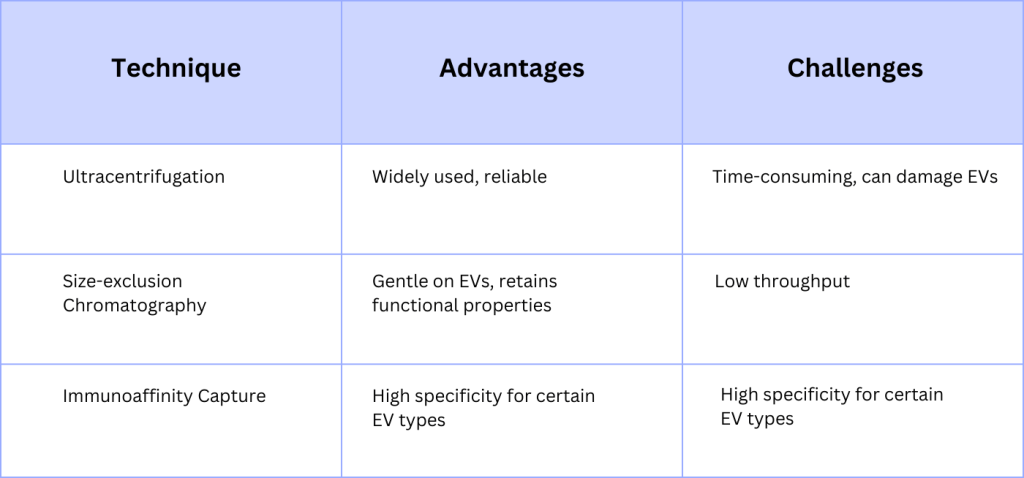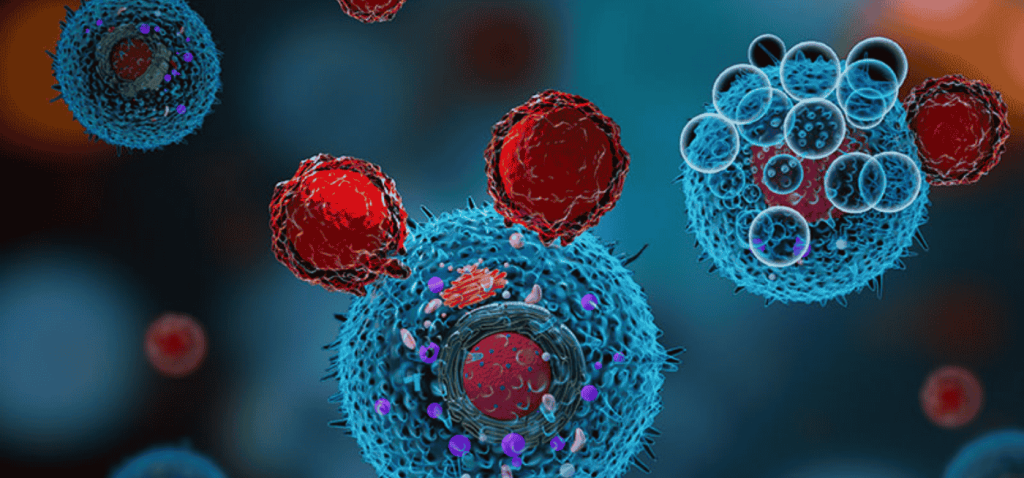In the quest to unravel the complexities of cellular communication and therapy, extracellular vesicles (EVs) have emerged as unsung heroes. These minute membrane-bound structures play a crucial role in mediating intercellular interactions, influencing both health and disease. As research strides forward, understanding how these vesicles function continues to revolutionize the fields of medicine and biotechnology.
The therapeutic potential of EVs spans a wide array of applications, from enhancing drug delivery systems to serving as biomarkers for disease diagnostics. With various types of EVs—such as exosomes, microvesicles, and apoptotic bodies—researchers are discovering how these particles can be leveraged for novel medical interventions. Central to this exploration are the advancements in isolation and characterization techniques that allow scientists to uncover the intricate molecular mechanisms behind EV biogenesis and function.
As we delve into the current landscape of EV research, it becomes evident that, while challenges remain, the future holds immense promise. Standardization of protocols and exploration of clinical applications are set to pave the way for EVs as key players in personalized medicine. This article will offer an overview of recent advancements in EV research, highlighting their significance in health science and what lies ahead for this fascinating field.
The Importance of Extracellular Vesicles (EVs) in Medicine
Extracellular vesicles (EVs) are crucial in modern medicine. These tiny particles are released by various cell types, including immune, epithelial, and endothelial cells. EVs, such as apoptotic bodies and multivesicular bodies, carry important materials like proteins and RNA.
Significant Uses of EVs in Medicine:
- Therapeutic Applications: EVs serve as drug delivery vehicles. They can deliver therapeutic agents directly to targeted cells, making treatments more effective and specific.
- Clinical Application: Mesenchymal stem cell (MSC)-derived EVs can aid in tissue repair and regeneration. They are being explored for regenerative medicine.
- Cancer Research: Tumor-derived EVs play a role in understanding cancer progression. They help in studying how tumors communicate and spread in the body.
EVs can cross the extracellular space to influence distant cells. Researchers like Zhang Y and Zhang W emphasize their potential in therapeutic delivery. Furthermore, the studies by Raposo G and Chen Y in journals like Nat Commun and Nat Cell Biol support the functional delivery capabilities of EVs.
In summary, EVs in medicine open new avenues for diagnostics and treatments, promising a bright future in healthcare advancements.
Key Topics in EV Research
Extracellular vesicles (EVs) have become a major focus in medical research. They are seen as essential tools for understanding cellular processes. This research spans from understanding basic biology to advanced therapeutic and diagnostic applications.
Therapeutic Potential of EVs
EVs have great potential for therapy. They act as effective drug delivery vehicles, providing specific treatments directly to target cells. Mesenchymal stem cell-derived EVs are particularly promising. They assist in tissue repair and regeneration, opening up new paths in regenerative medicine. This makes them a target for ongoing studies to enhance their therapeutic applications.
Diagnostic Applications of EVs
EVs are also significant in diagnostics. They can be used to detect diseases by analyzing the materials they carry. For example, cancer cells release specific EVs, known as tumor-derived EVs. These can provide insights into cancer progression and help in early disease detection. This can lead to personalized treatment plans, improving patient outcomes.
Role of EVs in Intercellular Communication
EVs play a vital role in communication between cells. They can transfer proteins and RNA across the extracellular space. This communication helps cells respond to changes and manage functions. Various cell types, including immune and endothelial cells, use EVs to exchange information and maintain health. Researchers like Raposo G and Chen Y highlight their importance in studies published in major journals such as Nat Commun and Nat Cell Biol. Understanding this communication is key to unlocking further medical advancements.
In conclusion, EV research offers exciting possibilities for future medical breakthroughs. From therapies to diagnostics, EVs are central to the evolution of healthcare.
Types of Extracellular Vesicles
Extracellular vesicles (EVs) are small structures released by cells into the extracellular space. They play a key role in cell communication and have potential uses in therapeutic applications. EVs come in different types, each with unique features and functions.
Exosomes
Exosomes are tiny EVs formed inside multivesicular bodies within cells. These vesicles are released into the extracellular space when these bodies fuse with the cell membrane. Exosomes can carry a wide range of molecules such as proteins and RNA. They have drawn interest for their potential as drug delivery vehicles. Exosomes from mesenchymal stem cells (MSC-derived EVs) are studied for their healing properties. They can influence immune cells and endothelial cells.
Microvesicles
Microvesicles are another type of EV. They form by budding off directly from the cell membrane. They are larger than exosomes and contain various cell-derived materials. Microvesicles can reflect the parent cell’s state, making them useful for certain clinical applications. These vesicles are studied for their role in communicating with immune cells and carrying therapeutic agents.
Apoptotic Bodies
Apoptotic bodies are EVs released by dying cells during programmed cell death. They play a role in clearing out cell debris and signaling to other cells. Apoptotic bodies can contain fragments of DNA and cell organelles. Their function is crucial for maintaining tissue health and homeostasis. While less studied for therapeutic applications, understanding apoptotic bodies helps in comprehending various cell processes.
Advances in EV Research Techniques
Extracellular vesicles (EVs) are tiny particles released by cells into the extracellular space. They play a crucial role in cell communication and have potential in therapeutic applications. Recent advances in EV research have both broadened our understanding and increased their potential in clinical use. This section will explore the latest in isolation and characterization techniques for EVs.
Isolation Techniques
To study EVs effectively, it is essential to isolate them from other components in cell cultures or body fluids. Common methods include ultracentrifugation, size-exclusion chromatography, and immunoaffinity capture. Recent advancements have improved these techniques, making them more efficient and reliable.
Here is a comparison of some common EV isolation techniques:

Innovations like microfluidic devices and new filter systems are also being explored to make the isolation process quicker and more precise.
Characterization Methods
Characterizing EVs is crucial to understanding their origin, function, and potential as therapeutic agents. Several techniques are used for this purpose, each offering unique insights into EVs.
- Dynamic Light Scattering (DLS): Measures the size distribution of EVs in a sample. It is fast and non-invasive.
- Nanoparticle Tracking Analysis (NTA): Provides size distribution and concentration. This method is commonly used for its accuracy.
- Western Blotting: Determines specific proteins in EVs, helping to identify their cellular origins like epithelial or endothelial cells.
Researchers also utilize sophisticated imaging techniques, like transmission electron microscopy, to visualize the structure of EVs, including intraluminal vesicles and multivesicular bodies.
With ongoing research and technological advancements, the potential for EVs as drug delivery vehicles and their application in personalized medicine remains vast and promising.
Enhancing EV Functionality
Extracellular vesicles (EVs) are small particles released by cells into the extracellular space. These vesicles play a crucial role in communication between cells. Scientists are now enhancing their abilities to carry therapeutic agents. By improving EV functionality, they can serve as effective drug delivery vehicles.
Engineering EVs for Targeted Drug Delivery
Researchers are focusing on engineering EVs to target specific cell types. This involves modifying EVs to recognize certain markers on endothelial cells or tumor-derived cells. By doing so, EVs can deliver drugs more precisely, reducing side effects. Scientists like Zhang Y and Chen CS are at the forefront of this innovating technology.
EVs Derived from Mesenchymal Stem Cells
Mesenchymal stem cells (MSCs) are known for their healing properties. EVs derived from MSCs, or MSC-derived EVs, are rich in growth factors and proteins. These EVs can help repair tissue and reduce inflammation. This makes them promising in a wide range of therapeutic applications. Chen Y and Zhang W have contributed significantly in this field.
EVs Derived from Immune Cells
Immune cells, like dendritic cells, also release EVs. These vesicles can boost the immune response in the body. They have potential in treating infections and cancers. Scientists are studying how to enhance their abilities for better clinical applications. Raposo G’s research has provided valuable insights into these EVs.
Understanding EVs and their enhancements can revolutionize modern medicine. They offer a promising future for targeted treatments and effective therapies.
Molecular Mechanisms of EV Biogenesis
Extracellular vesicles (EVs) are tiny particles released by cells into the extracellular space. They play a key role in cell communication. The biogenesis of EVs involves several molecular mechanisms and cell types.
- Intraluminal Vesicles Formation: EVs start forming in multivesicular bodies (MVBs) within the parental cells. Intraluminal vesicles are created by the inward budding of the MVB membrane.
- Types of EVs: There are different types of EVs, including apoptotic bodies, microvesicles, and exosomes. Each type is released by distinct pathways and has unique functions.
- Release and Uptake: Once formed, EVs are released into the extracellular space. They can be picked up by nearby or distant cells. This process spreads molecular signals like proteins and RNA.
Key Players in Biogenesis:
- Endothelial cells
- Epithelial cells
- Immune cells, including dendritic cells
Researchers, including Zhang Y and Chen Y, are studying these mechanisms for therapeutic applications. Understanding EV biogenesis could help develop drug delivery vehicles and better clinical applications.
EV-derived Cargo and Its Implications
Extracellular vesicles (EVs) carry a wide range of biomolecules from their parental cells. These include proteins, lipids, and nucleic acids. This diverse cargo can influence recipient cells. It can alter their functions and biological processes. Research into EV-derived cargo is expanding. It offers exciting possibilities for therapeutic applications and drug delivery vehicles.
Role of DNA in EV Function
DNA is a key component of the cargo in some EVs. It plays a big part in cell communication. EVs can transfer DNA from one cell to another. This transfer can change gene expression in recipient cells. For instance, EVs from tumor-derived cells often carry DNA that can influence tumor growth in new areas. This makes them a focus in cancer research.
Other Biomolecular Cargo
Besides DNA, EVs carry many other biomolecules, including:
- RNA: Messenger RNA (mRNA) and microRNA (miRNA) which can influence protein production in target cells.
- Proteins: Functional proteins that perform various roles in immune responses and cell repair.
- Lipids: Components that shape EV structure and can engage receptors on target cells.
EVs as Biomarkers in Disease Diagnostics
Extracellular vesicles (EVs) have emerged as powerful biomarkers in disease diagnostics. These tiny particles, derived from parental cells, roam within the extracellular space. They are key players in cell communication, carrying proteins, RNA, and DNA.
Advantages of EVs in Diagnostics:
- Non-Invasive Collection: EVs can be taken from blood, urine, and saliva, making sampling easier.
- Specificity and Sensitivity: The cargo within EVs can indicate the presence or progression of diseases.
- Wide Range of Sources: They are released by various cell types, like epithelial and endothelial cells, providing insights into different bodily functions and conditions.
EVs’ role in diagnostics spans numerous diseases, including cancer and cardiovascular disorders. For cancer, tumor-derived EVs offer valuable insights into tumor biology and progression. In cardiovascular diseases, EVs from mesenchymal stem cells and endothelial cells highlight changes in vascular function.
Researchers like Zhang Y, Chen Y, and Raposo G are at the forefront of EV studies. Journals like Nat Commun and Nat Cell Biol frequently feature EV research, emphasizing their significance. As scientists deepen their understanding, EVs continue to promise revolutionary clinical applications.
Challenges in EV Research
Extracellular vesicle (EV) research has made significant advancements, but challenges remain. A major issue is the diversity of EVs, which includes types like exosomes, microvesicles, and apoptotic bodies. This makes it difficult to standardize research methods.
Isolation and characterization of EVs also pose challenges. Various cell types, such as endothelial and epithelial cells, produce EVs. This requires precise techniques to ensure purity and specificity. Furthermore, the environmental conditions and the parental cells impact EV formation.
Reproducibility in research is another challenge. EVs can have different properties even within the same cell type. Tumor-derived EVs, for example, can show a wide range of behaviors depending on their origin.
Moreover, the development of EV-based therapeutic applications is complex. Understanding how these vesicles interact with recipient cells, like immune and dendritic cells, is crucial. Drug delivery using EVs remains an area needing further optimization.
Despite these challenges, EVs hold promise as therapeutic agents and drug delivery vehicles. Continuous research and collaboration in the field could unlock more of their potential.
Key Challenges in EV Research:
- Diversity of EV types
- Isolation and characterization
- Reproducibility in studies
- Development of therapeutic applications
Addressing these issues is key to advancing EV research and its clinical applications.
Future Directions in EV Research
Extracellular vesicle (EV) research is rapidly evolving. Scientists are striving to unlock their full potential. The future holds many possibilities for advanced applications and improved methodologies.
Standardization of Protocols
Standardizing protocols is essential for consistent EV research. Due to the diverse cell types, like endothelial and mesenchymal stem cells, a universal method is hard to establish. However, it is crucial to ensure research accuracy. Techniques should consider the different EV types, including multivesicular bodies and apoptotic bodies.
Key Steps for Standardization:
- Develop universally accepted isolation methods.
- Ensure characterization accuracy.
- Optimize reproducibility across studies.
These steps can enhance data quality and comparability in EV studies.
Clinical Applications and Therapeutic Interventions
Extracellular vesicles are promising tools for clinical application. They have the potential to serve as therapeutic agents. EVs can deliver drugs effectively, acting as natural drug delivery vehicles. For instance, MSC-derived EVs show promise in repairing damaged tissues. They can also modulate immune responses, influencing how immune cells and dendritic cells function.
Potential Therapeutic Applications:
- Targeted drug delivery.
- Regenerative medicine via cell-derived EVs.
- Anti-inflammatory therapies using EV interaction with immune cells.
These applications could revolutionize treatments and improve patient outcomes.
In conclusion, as research progresses, EVs may pave the way for new therapeutic solutions. Collaboration in EV research could lead to breakthroughs in both science and medicine.




